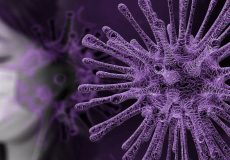Hypermobility and the Whole Body: Why It’s Not Just About Joints
Hypermobility might have earned you a few “oohs” and “ahhs” growing up—maybe you could twist into strange positions or casually bend your thumb back to your forearm. But for many, it’s much more than just flexible joints. Hypermobility can influence everything from gut health to circulation, immune response, and even your sense of balance.
So let’s unravel this bendy mystery, look at what it really means, and talk about how to support a hypermobile body—without needing to become a contortionist yogi.
Is This You? Signs You Might Be Hypermobile
Everyone experiences hypermobility differently, and it can often show up in subtle ways that are easy to overlook. Some signs to keep an eye out for include:
-
Your thumb can be bent back to touch your forearm (no, that’s not a universal party trick).
-
Your knees or elbows extend backwards a little when straightened (this is called hyperextension).
-
You experience poor posture or feel like standing upright is more effort than it should be.
-
You often feel clumsy or struggle with coordination.
-
Aches and pains are a regular part of your day.
-
You have flat feet or trouble with foot stability.
-
Your skin is stretchy or has a “velvety” texture.
-
You’re prone to hernias, varicose veins, or even pelvic organ prolapse.
- Piezogenic papules – small, soft bumps that appear on the heels when standing, caused by fat herniating through connective tissue (see picture below)
-
Frequent fatigue, headaches, and a need to lie down or rest often.
-
Frequent headaches or migraines.
-
You bruise easily or heal slowly from cuts and injuries.
- If several of these feel familiar, hypermobility might be a piece of your health puzzle.


Hypermobility or Ehlers-Danlos Syndrome?
Now, let’s clear up a common confusion: hypermobility and Ehlers-Danlos Syndrome (EDS) aren’t exactly the same.
-
Hypermobility refers to joints that move beyond the normal range. This can be totally benign or part of a broader condition.
-
Ehlers-Danlos Syndrome (EDS) is a group of connective tissue disorders. The most common subtype, Hypermobile EDS (hEDS), includes joint hypermobility, but also often involves additional features like stretchy skin, chronic pain, frequent injuries, and systemic issues like digestive or immune challenges. The other types of EDS are considered to be rarer and are often connected with specific genetic mutations, whereas hEDS does not have a genetic testing option. It is one of the oldest known causes of bruising and bleeding, and it was described first by Hippocrates in 400 BC.
The difference? EDS, particularly hEDS, has more defined diagnostic criteria, it’s often familial and tends to present more extensively across different body systems.
If you’d like to explore the official diagnostic criteria, the Dysautonomia Support Network has a comprehensive guide here.
The Many Faces of Hypermobility
Hypermobility doesn’t always present the same way for everyone. Some people experience it more internally (such as digestive and reproductive health impacts), while others might deal with more vascular symptoms like varicose veins or POTs. Then there are those whose joints pop and click their way through the day, facing subluxations, dislocations, or even hernias and prolapses. And for many, inflammation is a key player, showing up as histamine issues, migraines, or autoimmune conditions.
Here’s a non-exhaustive list of conditions often linked with hypermobility:
-
POTs (Postural Orthostatic Tachycardia Syndrome)
-
ADHD & ASD
-
Lipoedema
-
IBS & gut concerns
-
Endometriosis
-
Autoimmune conditions
-
Migraines
-
TMJ & dental issues
-
Fatigue and sleep problems
-
Dysautonomia
-
Venous insufficiencies
In one study, 51% of neurodivergent individuals were hypermobile, compared to just 17.5% of neurotypical people. These overlapping conditions often come as a “package deal” thanks to shared root issues like immune dysregulation and chronic inflammation.

Photo by David Hofmann on Unsplash
What’s Going On Beneath the Surface?
Hypermobility is often viewed as a structural issue—joints that bend too far, ligaments that stretch too much—but that’s only part of the picture. Underneath it all, immune dysregulation and chronic inflammation are key drivers. And they don’t just influence joint laxity—they ripple through many systems in the body.
Chronic inflammation plays a central role not only in hypermobility but also in conditions that commonly appear alongside it—like endometriosis, autoimmune disorders, IBS, POTS, ADHD, and more. When the immune system is constantly switched “on,” it uses up valuable resources, contributing to fatigue and leaving the body more vulnerable to further dysfunction.
Gut, Glands, and Gut Feelings
Weakened connective tissue doesn’t stop at the joints—it affects internal structures too. In the gut, this can mean altered motility, leading to constipation, diarrhoea, or both. There’s also an increased risk of SIBO (small intestinal bacterial overgrowth) and intestinal permeability (aka “leaky gut”), which can heighten food sensitivities and drive inflammation even further.
The nervous system often gets caught in the crossfire. Dysautonomia, a dysregulation of the autonomic nervous system, is common in hypermobility. It keeps the body stuck in sympathetic “fight or flight” mode—affecting digestion, hormone production, immune response, vascular function, and even emotional regulation. It’s like the body’s internal control panel is out of sync.
Structural Stress and Muscle Overload
When collagen—the body’s main structural protein—isn’t working optimally, ligaments can’t do their job properly. Joints become less stable, and muscles are left to pick up the slack. This muscle overcompensation means they’re often overworked and tight, leading to fatigue, stiffness, and a higher risk of injury.
Nearby nerves may also become pinched or overstretched near unstable joints, contributing to chronic pain or sensitivity. Over time, this can lead to altered pain responses—where the body becomes hypersensitive even to minor stimuli.
Hormones and Histamine
It’s not just joints and nerves—internal organ health can also be affected. Lax pelvic ligaments may result in the uterus sitting differently, contributing to pelvic pain, overactive pelvic floor muscles, or prolapse. On top of that, many hypermobile individuals experience increased histamine levels, which can worsen period pain, fuel endometriosis, and further fan the flames of inflammation and immune dysregulation.
Blood Flow and Brain Fog
When blood vessels are stretchy too (as they often are in hypermobility), they may not efficiently send blood back to the brain and upper body. This can lead to orthostatic intolerance and POTS symptoms—things like dizziness, racing heart, heavy legs, tingling, brain fog, and even anxiety. And because the body interprets these blood flow issues as stress, it can perpetuate the sympathetic nervous system loop, feeding into fatigue, inflammation, and emotional overwhelm.
The Viral Connection
Interestingly, certain viral infections like COVID-19 and Epstein-Barr virus (EBV) can worsen hypermobility-related symptoms. These viruses can increase inflammation, unbalance the immune system, and act as triggers or amplifiers for symptoms that were previously manageable.
Support Strategies for Hypermobility
While it’s not always possible to “fix” hypermobility, there are powerful ways to support your body and improve quality of life, these are a few of them:
-
Strength Training: Carefully guided resistance training can help stabilize joints, improve proprioception, and reduce the risk of injury.
-
Adequate Protein: Essential for tissue repair, strength, and energy. Adequate protein also helps with blood sugar level stability, an important factor for those with hypermobility.
-
Mineral Balance: Key minerals like magnesium, calcium, and zinc support nervous system regulation and muscle health. We can assess mineral status through a HTMA (hair tissue mineral analysis) and also look into your diet to assess for potential gaps.
-
Gut Health: Focus on restoring the gut lining and supporting a healthy microbiome to reduce inflammation and improve nutrient absorption.
-
Nervous System Support: Practices like mindfulness, breathwork, and even vagal nerve stimulation can help reduce stress, improve digestion, and support immune balance.
Let’s Work Together
If you’ve been nodding along and thinking, “This is me!”—we’re here to help. Whether you’re newly exploring hypermobility or have been managing symptoms for years, working with a practitioner who understands the full picture can make all the difference.
Get in touch today to book a consultation. Let’s build a plan that’s tailored to your unique body and needs.
Because living in a bendy body shouldn’t mean bending over backwards to feel good.
References
- Caliogna, L., Guerrieri, V., Annunziata, S., Gagliardi, F., Sessa, F., & De Caro, R. (2021). Biomarkers for Ehlers-Danlos syndromes: Is there a role? International Journal of Molecular Sciences, 22(18), 10138. https://doi.org/10.3390/ijms221810138
- Castori, M., Camerota, F., Celletti, C., Danese, C., Santilli, V., & Grammatico, P. (2015). Neurological manifestations of Ehlers-Danlos syndrome(s): A review. Iranian Journal of Neurology, 13(4), 190–208. https://www.ncbi.nlm.nih.gov/pmc/articles/PMC4300794/
- Castori, M., & Voermans, N. C. (2023). Pain in Ehlers-Danlos syndrome: A non-diagnostic disabling symptom. Diagnostics, 13(8), 1443. https://doi.org/10.3390/diagnostics13081443
- Chopra, P., Tinkle, B., Hamonet, C., Brock, I., Gompel, A., Bulbena, A., & Francomano, C. (2017). Pain management in the Ehlers-Danlos syndromes. American Journal of Medical Genetics Part C: Seminars in Medical Genetics, 175(1), 212–219. https://doi.org/10.1002/ajmg.c.31555
- Eccles, J. A., Owens, A. P., Mathias, C. J., Umeda, S., & Critchley, H. D. (2022). Joint hypermobility links neurodivergence to dysautonomia and pain. Frontiers in Psychiatry, 12, 797165. https://doi.org/10.3389/fpsyt.2021.797165
- Glans, M., Bejerot, S., & Li, X. (2021). Association between adult attention-deficit hyperactivity disorder and generalised joint hypermobility: A cross-sectional case control comparison. Journal of Psychiatric Research, 143, 334–340. https://doi.org/10.1016/j.jpsychires.2021.07.006
- Kanjwal, K., Saeed, B., Karabin, B., Kanjwal, Y., Grubb, B. P., & Karabin, B. (2023). Dysautonomia, hypermobility spectrum disorders and mast cell activation syndrome: A review of overlapping conditions. Frontiers in Neurology, 14, 1458385. https://doi.org/10.3389/fneur.2023.1458385
- Wang, E., Ganti, T., Vaou, E., & Hohler, A. (2021). The relationship between mast cell activation syndrome, postural tachycardia syndrome, and Ehlers-Danlos syndrome. Allergy and Asthma Proceedings, 42(3), 243–246. https://doi.org/10.2500/aap.2021.42.210034










